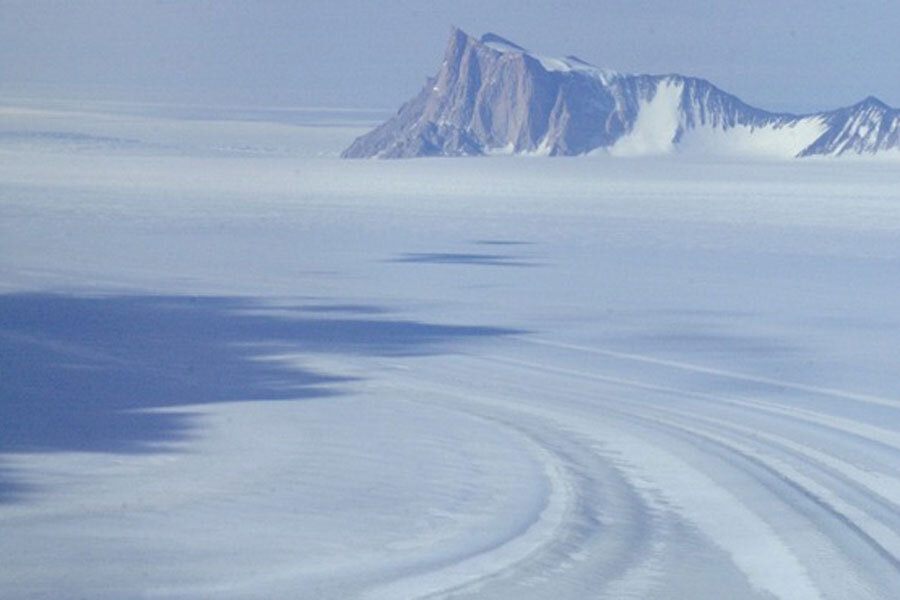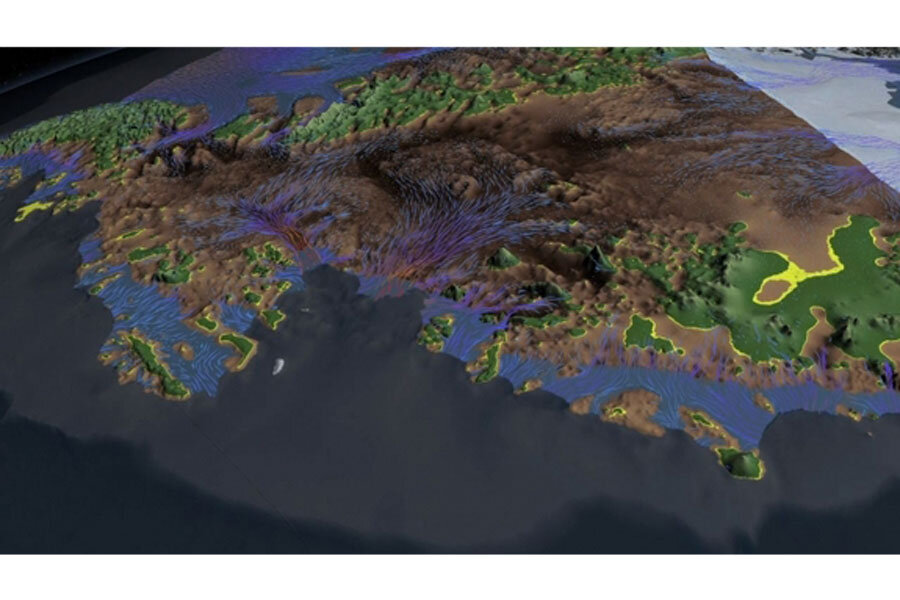Catastrophic collapse of Antarctic ice sheet now underway, say scientists
The catastrophic collapse of the massive West Antarctic Ice Sheet is underway, researchers said today (May 12).
The biggest glaciers in West Antarctica are hemorrhaging ice without any way to stem the loss, according to two independent studies. The unstoppable retreat is the likely start of a long-feared domino effect that could cause the entire ice sheet to melt, whether or not greenhouse gas emissions decline.
"These glaciers will keep retreating for decades and even centuries to come and we can't stop it," said lead study author Eric Rignot, a glaciologist at the University of California, Irvine, and NASA's Jet Propulsion Laboratory in Pasadena, Calif. "A large sector of the West Antarctic Ice Sheet has passed the point of no return." [Vanishing Glaciers: See Stunning Images of Earth's Melting Ice]
The West Antarctic Ice Sheet holds 10 percent of Antarctica's ice. Glaciers here sit in a giant bowl, with their base below sea level, making melting a concern since the 1970s. As the ice retreats into the bowl, it shrinks back into deeper water, making the glaciers unstable. Like frozen levees, the retreating glaciers pin back more stable parts of the Greenland-size ice sheet. Their collapse threatens the entire West Antarctic Ice Sheet.
Two papers published today in the journal Geophysical Research Letters and Science used different approaches to forecast the future of West Antarctica's shrinking glaciers. One study tracked the region's biggest glaciers for 40 years, and concluded from direct observations that the ice is unstoppable. The other relies on sophisticated computer models to predict the future melting of Thwaites Glacier, the biggest of West Antarctica's frozen ice rivers.
Both studies conclude that even dramatic changes in climate won't stop the retreat, because the glaciers are shrinking back into deep valleys with no ridges or mountains to halt their rapid pace. Any high topography can act like a speed bump and slow the galloping glaciers.
Rising seas
The good news is that sea-level rise will be relatively small in the coming centuries, according to the Thwaites Glacier model published today in the journal Science.
"Over the next few centuries, the rate of sea level rise will be pretty moderate," said lead study author Ian Joughin, a glaciologist at the University of Washington's Applied Physics Laboratory.
But the rapid retreat seen in the past 40 years means that in the coming decades, sea-level rise will likely exceed this century's sea-level rise projections of 3 feet (90 centimeters) by 2100, issued by the Intergovernmental Panel on Climate Change (IPCC), said Sridhar Anandakrishnan, a glaciologist at Pennsylvania State University, who was not involved in the study.
If all of West Antarctica melts, the collapse is predicted to raise sea level by 11 to 13 feet (3.3 to 4 meters).
The Antarctic Peninsula has been warming rapidly for at least a half-century, and continental West Antarctica has been getting steadily hotter for 30 years or more.
But researchers suspect the ice is melting from below, not from above. Changing wind patterns are believed to be driving warm water up beneath West Antarctica's glaciers, "eating away at their feet," Anandakirshnan said.
From satellite observations such as radar interferometry, Rignot and his colleagues conclude a common cause underlies the retreat of West Antarctica's largest glaciers, including Pine Island Glacier, known for cleaving massive icebergs, and its neighbor, Thwaites Glacier. The others are Haynes, Smith and Kohler glaciers.
"One of the most striking features is they have been reacting almost simultaneously," Rignot said. "We do think this is related to climate warming."
Email Becky Oskin or follow her @beckyoskin. Follow us @livescience, Facebook & Google+. Original article on Live Science.
- Loss of Antarctic Glacier is Irreversible, NASA Scientists Say | Animation
- Earth in the Balance: 7 Crucial Tipping Points
- Photo Gallery: Antarctica's Pine Island Glacier Cracks
- Image Gallery: Greenland's Melting Glaciers
Copyright 2014 LiveScience, a TechMediaNetwork company. All rights reserved. This material may not be published, broadcast, rewritten or redistributed.






